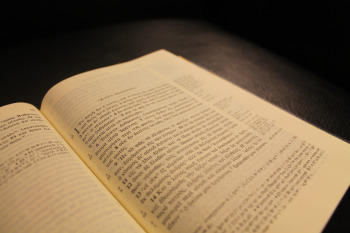"When the Christ Appears" -- John 7:25-36
 Tuesday, March 31, 2015 at 09:54AM
Tuesday, March 31, 2015 at 09:54AM  The Twenty-Sixth in a Series of Sermons on the Gospel of John
The Twenty-Sixth in a Series of Sermons on the Gospel of John
While he was ministering in Galilee, people saw Jesus heal the sick and cast out demons. They heard Jesus teach, and identified him as the great prophet foretold by Moses. When Jesus fed over five thousand people in the wilderness east of the Sea of Galilee, messianic fervor grew so intense that people wanted to make Jesus king. But six months later when Jesus went to Jerusalem during the Feast of Booths and began teaching in the temple, things were different. Some thought Jesus to be a good man. Others thought that Jesus was a dangerous false teacher. When Jesus revealed to the crowds who gathered to hear him teach that the religious leaders of Israel were plotting to kill him, some of those present alleged that Jesus was demon-possessed. As the events in John’s Gospel begin to point us toward the cross and the empty tomb, the critical question is now on everyone’s mind. Who is this man? Is he really the Christ?
As we work our way through the Gospel of John, we are in the seventh chapter and covering the initial exchanges between Jesus and the Jewish religious leaders of Israel during the so-called “conflict phase” of Jesus’ messianic mission. The conflict between Jesus and the religious leaders of Israel–which is recounted in John chapters 7-10–takes place during the Feast of Booths. According to Josephus (the famed Jewish historian), this was the most popular of the three principle Jewish feasts. Coming close on the heals of the Day of Atonement, the Feast of Booths was established by God before Israel entered the promised land. Pilgrims came to Jerusalem from outlying areas (Judea and the Galilee) and the city was packed with people during the eight days of the Feast.
By the time of Jesus, the Feast of Booths was a national harvest festival celebrated after the fall crop of olives and grapes had been harvested (late October, early November). The Feast included a solemn water-pouring ritual and a lamp-lighting ceremony. Jesus will refer to both rituals as the conflict between himself and the Jewish leaders continues to escalate. The eight-day celebration of the Feast of Booths serves as the setting for the conflict which follows.
As we saw last time, Jesus was still in the Galilee region when his brothers (the younger biological children of Mary and Joseph) encouraged him to go to Jerusalem for the Feast with the intention of performing miracles–perhaps to regain some of the followers he had lost months earlier as a result of the “hard sayings” found in the “bread of life” discourse which Jesus had given while in the Galilee. In verses 3-4 of John 7, Jesus’ brothers told him, “leave here [the Galilee region] and go to Judea, that your disciples also may see the works you are doing. For no one works in secret if he seeks to be known openly. If you do these things, show yourself to the world.” Jesus’ brothers were still unbelievers at this time, and they do not understand that it was not yet time for Jesus to go to Jerusalem. Jesus will go when it is his Father’s will that he go. His brothers went to the opening of the Feast without him.
To read the rest of this sermon: Click Here


Reader Comments